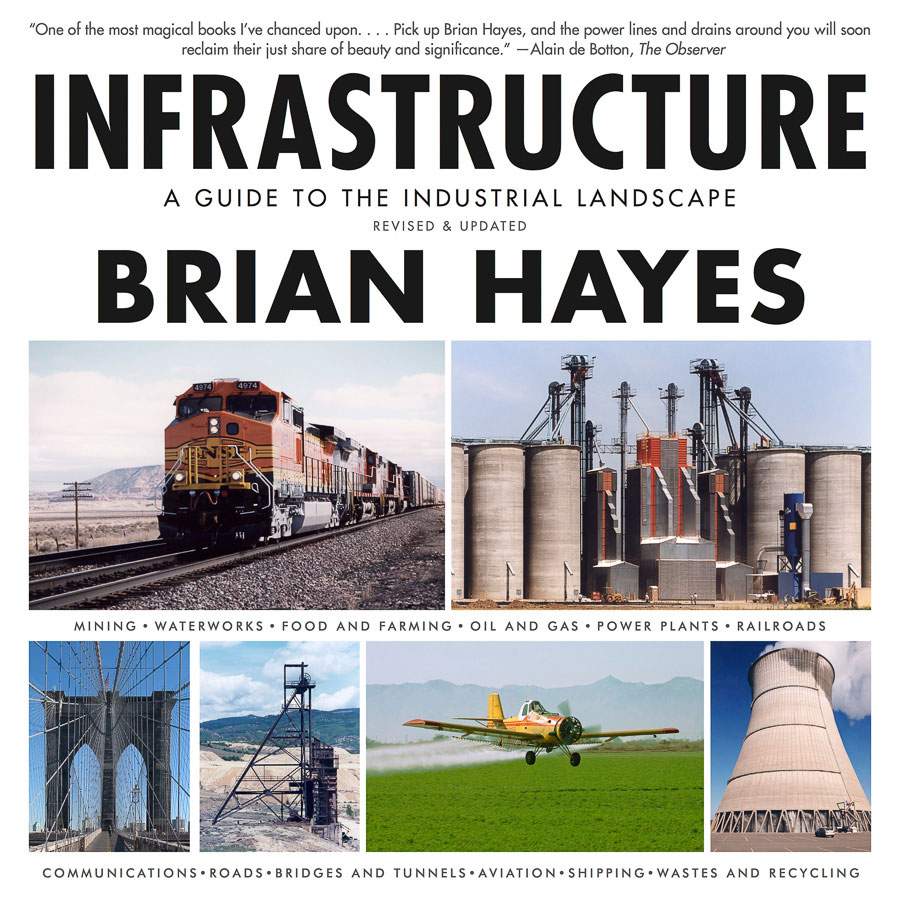
Welcome to the world we’ve made for ourselves!
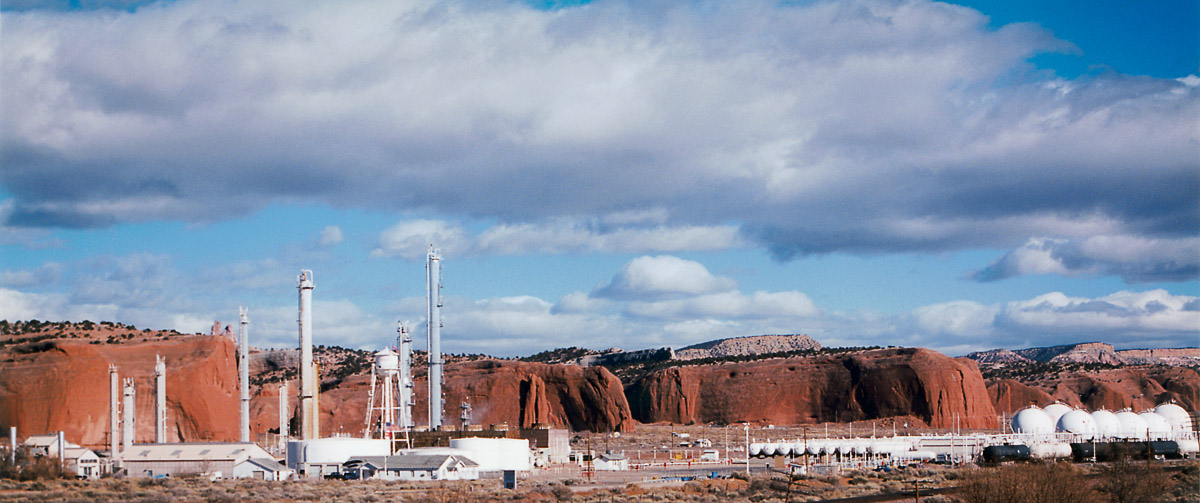
Infrastructure is a book about all the stuff that people have built on the landscape we live in—the machinery that supplies us with raw materials, food, water, and energy, and the networks of roads, rails, and communications lines that hold civilization together. This is a nature guide to everything that isn’t nature.
Some of the most interesting artifacts are things we pass on the street every day, although we seldom take notice of them, and we may not know exactly what they do, how they work, or why they have been designed in particular shapes and sizes.
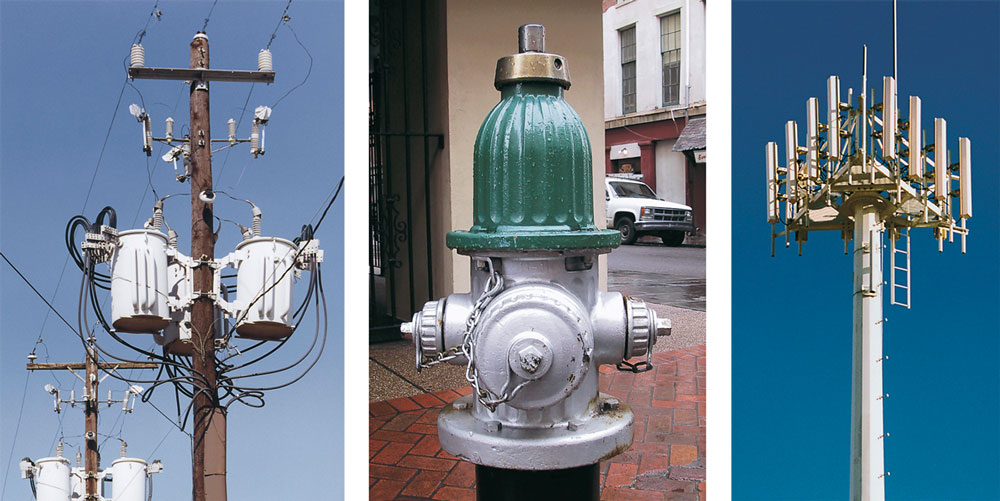
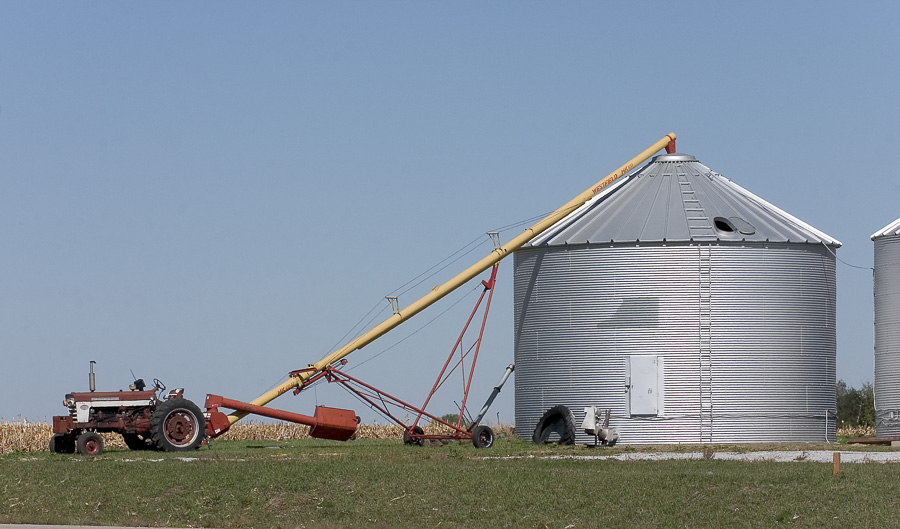
If you live out in the country, other kinds of sights may be more familiar.
In some areas, the rhythmic nodding and sighing of oil well pumps is a commonplace part of daily life. (In years to come, we'll be seeing more of these in regions outside the traditional Oil Patch.)
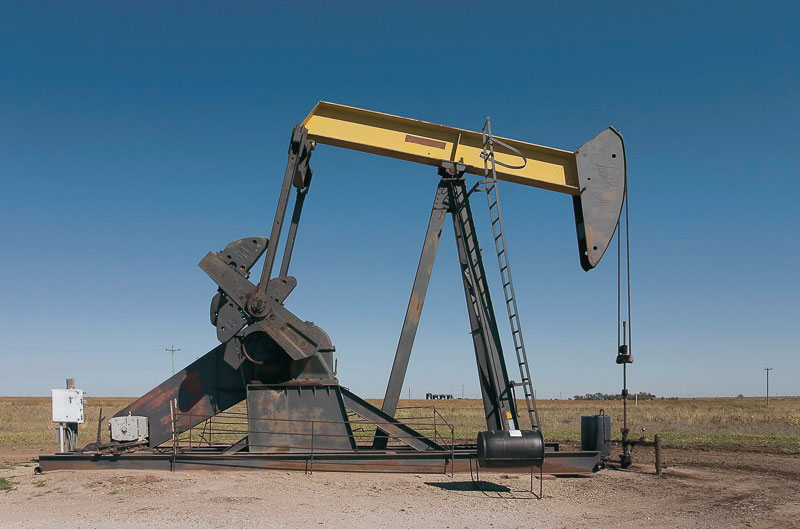
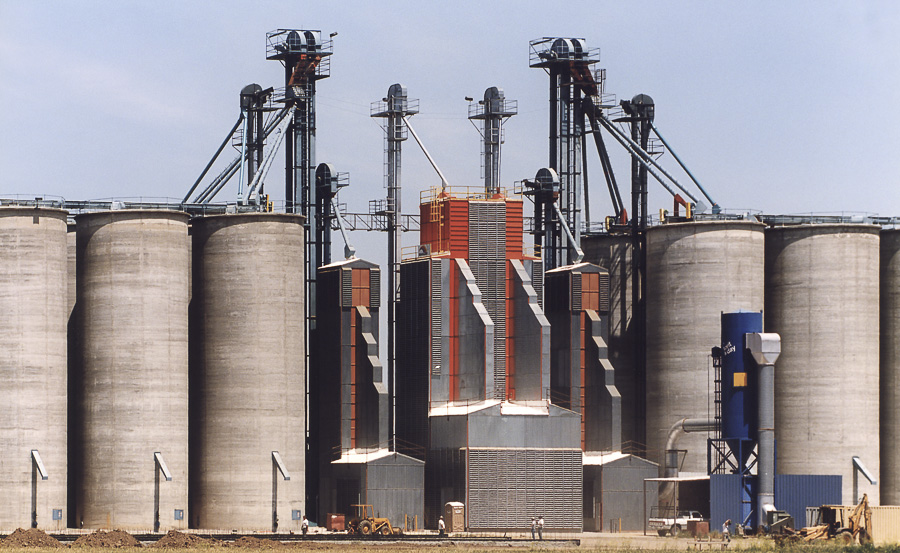
Beyond the ordinary furnishings of the built environment, there are grander fantasies of the technological imagination, such as this cathedral of agricultural production, complete with spires and flying buttresses.
Poke around in some corners of the industrial landscape, and you find exotic and rather mysterious apparatus lined up in a precise geometric array.
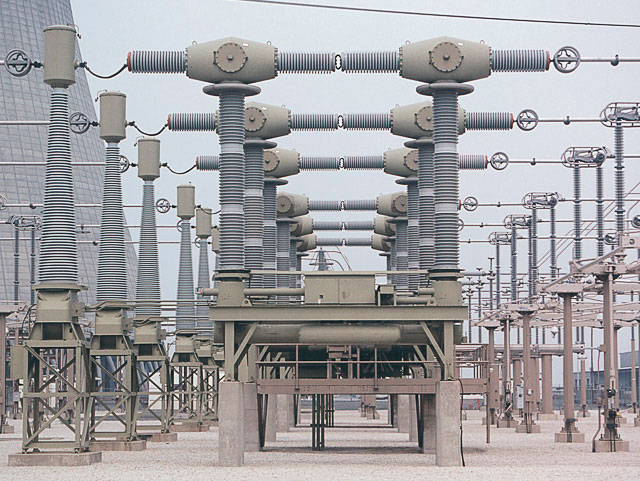
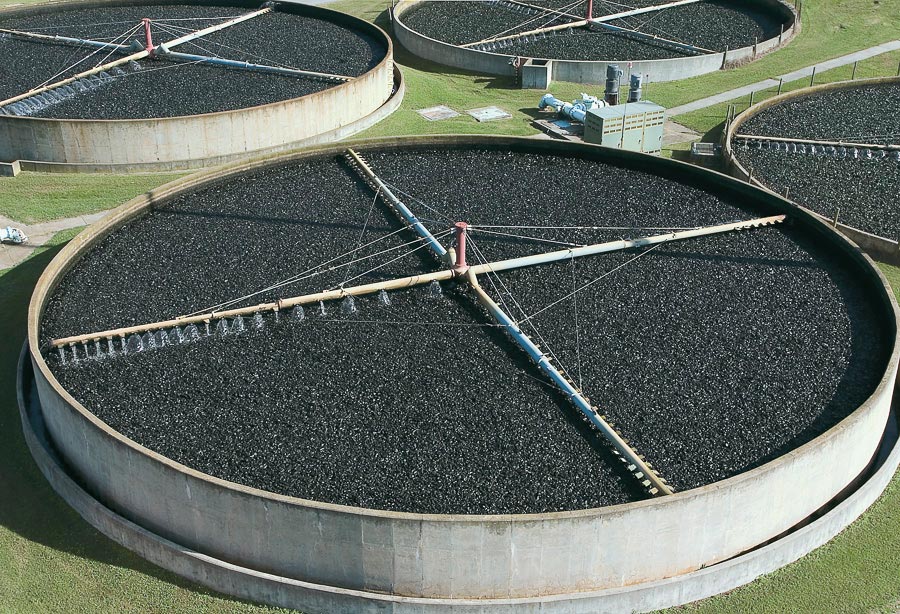
There are glimpses of beauty in unlikely places . . .

. . . and moments of whimsy.
You look out your window on a cross-country flight and see crop circles everywhere: The checkerboard landscape of rural America has checkers on it!
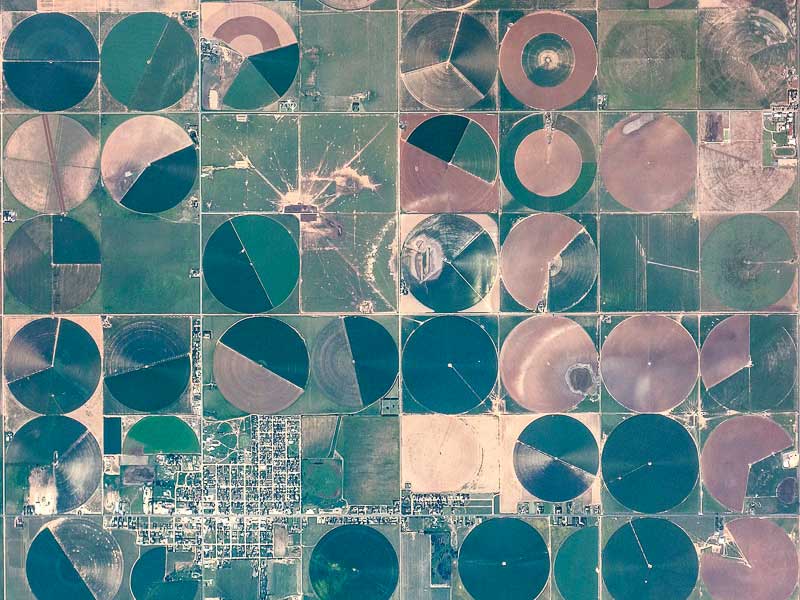
Back down on the ground, it’s not hard to figure out what makes the polka-dotted landscape: A huge sprinkler slowly twirls around the center of each field, creating a green circle.
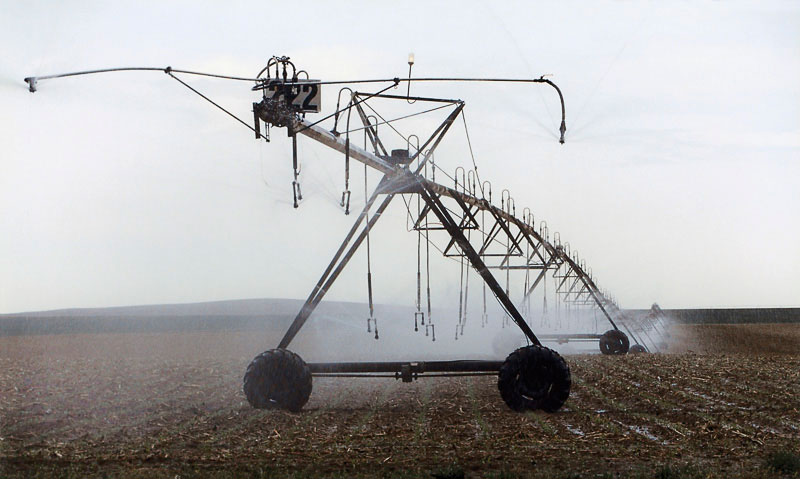
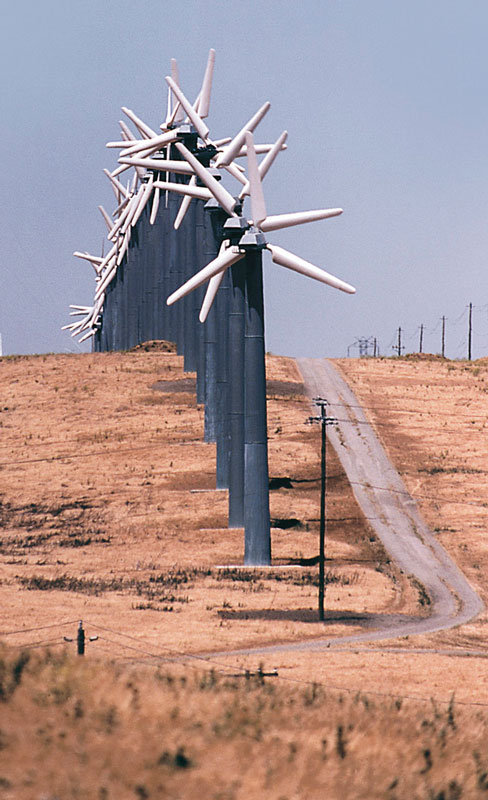
Sometimes our constructions have a jolly aspect, as with these wind turbines looking like a line of mechanized cancan dancers.
Elsewhere the mood is darker.
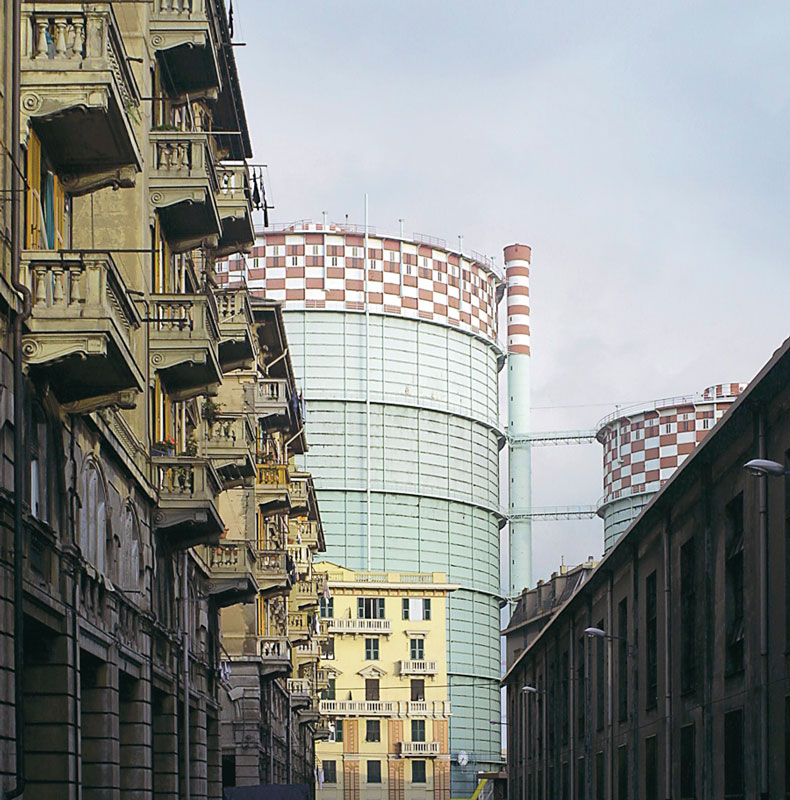
Sometimes it’s the immense scale of the enterprise that makes an impression.

And sometimes it’s just a small detail that attracts the eye.

Making Sense of It All
Industrial installations can be forbiddingly complex, but they are not beyond comprehension. Almost always, there’s a system to it: Stuff comes in one end, gets processed somehow, and goes out the other end. Infrastructure, the book, has a system too. It begins with raw materials and fuels that we dig or pump from the earth, and the food we grow. Then there are the networks of rails and roads, power lines and communications channels that lace us together. And, at the end, whatever is left goes back in the ground as waste, unless we can learn to make something new of it.

TABLE OF CONTENTS
CHAPTER 1: OUT OF THE EARTHThe raw materials for building a civilization are things we dig out of the ground: fuels, ores, stone. |
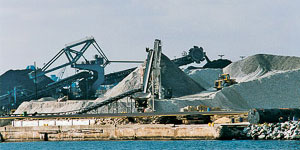
|
CHAPTER 2: WATERWORKSEvery inhabited place—even a campsite—needs the means to collect, store, and distribute water. |
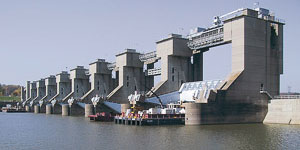
|
CHAPTER 3: FOOD AND FARMINGFarming, our first and most essential industry, transforms the landscape like no other human activity. |
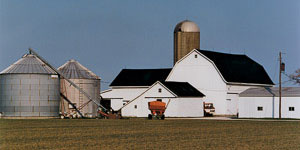
|
CHAPTER 4: OIL AND GASPetroleum fuels modern life, but it has been with us only a little while, and it won’t last forever. |
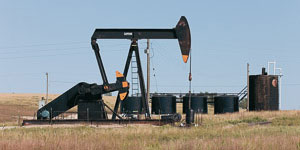
|
CHAPTER 5: POWER PLANTSWe squeeze the juice of electricity out of coal, gas, uranium, flowing water, wind, and sun. |
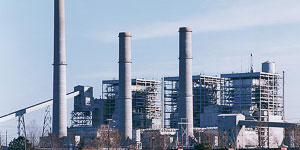
|
CHAPTER 6: THE POWER GRIDElectricity is invisible stuff, but transmission lines, sub- stations, and utility poles stand out on the landscape. |
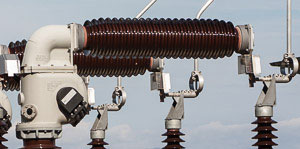
|
CHAPTER 7: COMMUNICATIONSAmerica has been wired and rewired three times over since the nineteenth century. Now it’s going wireless. |
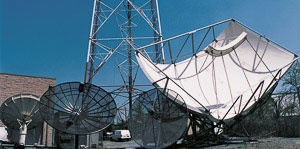
|
CHAPTER 8: ON THE ROADThe automobile has altered our landscape and our lifestyle more than any other technology of modern times. |
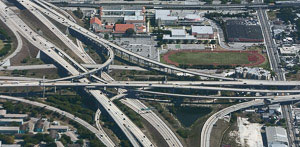
|
CHAPTER 9: THE RAILROADRailroad technology was the centerpiece of the nineteenth-century Industrial Revolution, and it still is. |

|
CHAPTER 10: BRIDGES AND TUNNELSBridges and tunnels create a path where none existed, spanning space or burrowing through the solid earth. |
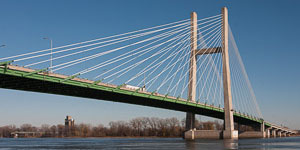
|
CHAPTER 11: AVIATIONAir transport breaks free of the earth, and yet airports occupy as much land as a fair-size city. |
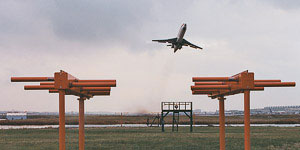
|
CHAPTER 12: SHIPPINGThe freight container—a box the size of a truck trailer— has made shipping a game of stacking Lego bricks. |

|
CHAPTER 13: WASTES AND RECYCLINGDust to dust, ashes to ashes: The cycle closes as we return to the earth some of what we dug out. |
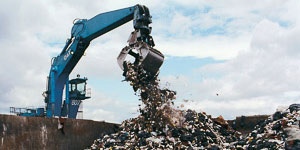
|
AFTERWORD: THE WORLD WE’VE MADE |
The Infrastructure Quiz!
Question 1: Once upon a time, every freight train ended with a caboose. No more: A caboose at the end of a train is as rare as a steam locomotive at the front. What became of the caboose?
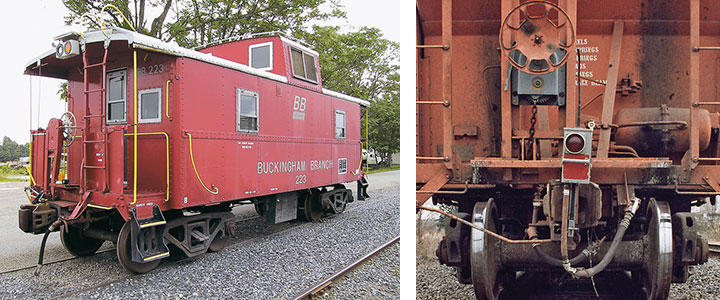
Show Answer
The replacement for the caboose is a small box with a blinking red light, sometimes called a Flashing Rear End Device, seen in the middle of the righthand photo above. It plugs into the train’s air-brake system and sends status reports by radio to the engineer up front.
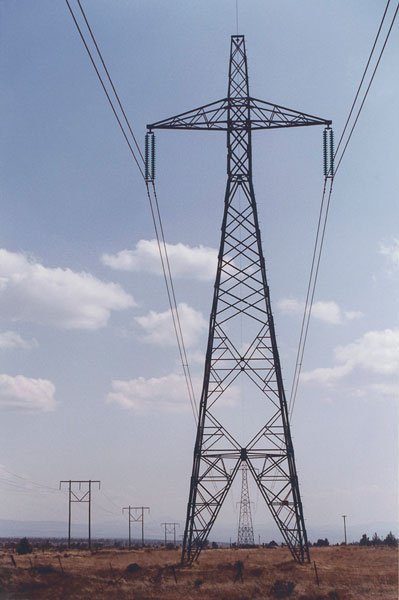
Question 2: There’s something very unusual about this power line. What sets it apart from almost all the other high-voltage lines that lace the landscape—including the one that’s visible in the background near the left edge of the photo?
Show Answer
Most power lines have three main conductors and three sets of insulators on every pylon, because they carry three-phase alternating current (AC) electricity. The power line in the foreground of the photo is a rare direct current (DC) transmission line, with only two sets of conductors and insulators. It runs from Oregon to southern California.
Question 3: These funnel-shaped objects on the roof of a sawmill in Sacramento, California, are called cyclones. What do they do?
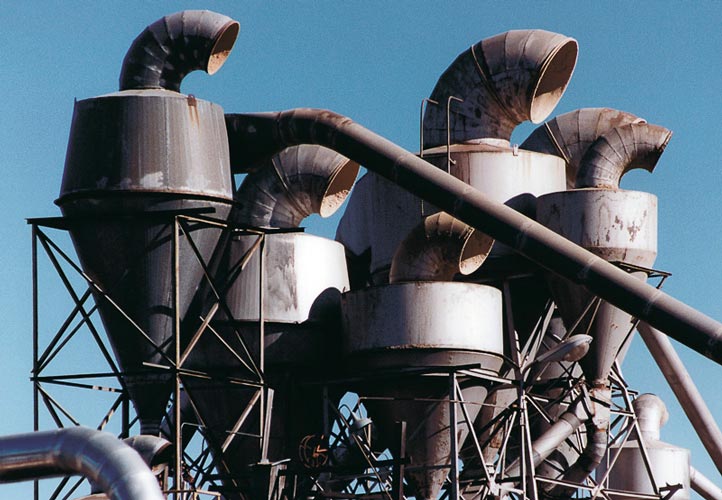
Show Answer
The location atop a sawmill is a clue. The saws inside are equipped with exhaust fans to collect sawdust; the cyclones separate the sawdust from the airstream.
Question 4: The tall structure in the foreground at the left, and its distant twin across the water at the right, are built directly over the tubes of the Holland Tunnel, which carries traffic under the Hudson River between Manhattan and Jersey City, New Jersey. What are the towers for?
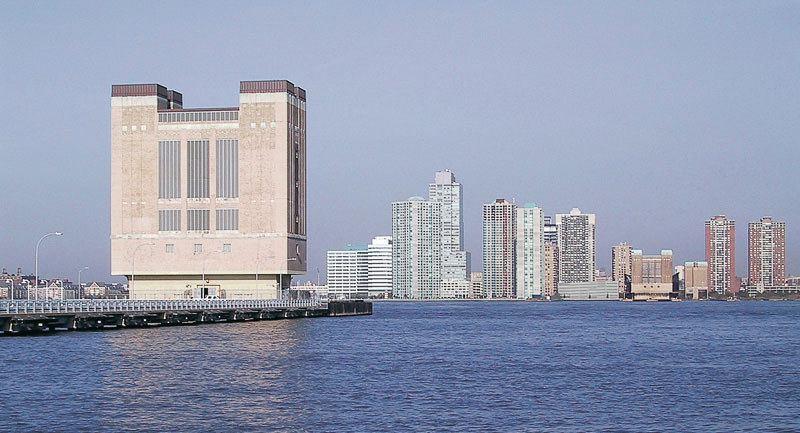
Show Answer
Fans again. The towers enclose air-moving equipment that supplies fresh air to the tunnel and sucks out the automobile fumes.
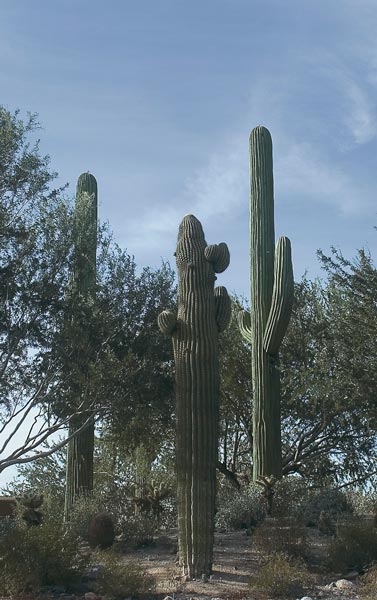
Extra credit: There are only two saguaro cactuses in this photograph. Which one is the impostor? What is it really?
Show Answer
The cactus on the right is a concealed cell-phone base station, bolted to a concrete pad.
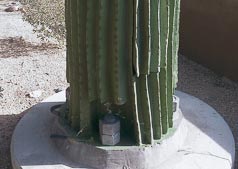
What’s New?
The first edition of Infrastructure came out in 2005. The industrial landscape has seen changes since then. The revised and updated edition of the book, published in October 2014, covers new developments and offers reassessments of some older technologies.
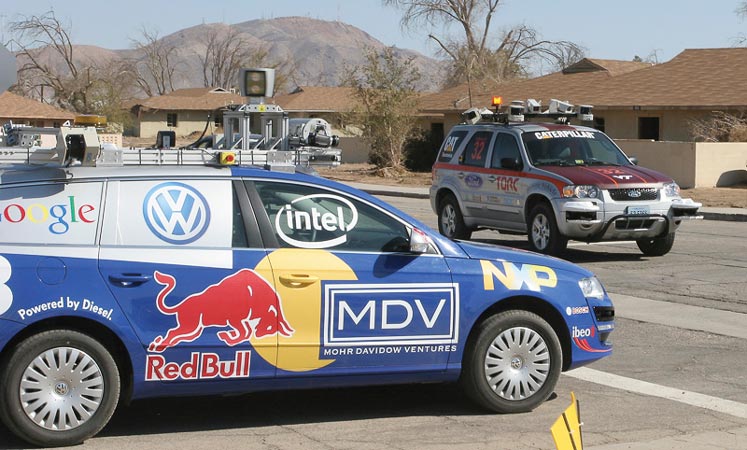
(Photo by Defense Advanced Research Projects Agency.)
One distinctive novelty is the sudden appearance of light-emitting diodes (LEDs) in places where the tungsten-filament light bulb held sway for a century. Almost all new traffic signals use LEDs rather than a light bulb behind a colored glass lens. LEDs are also showing up in street lights, as well as light bulbs for home use.

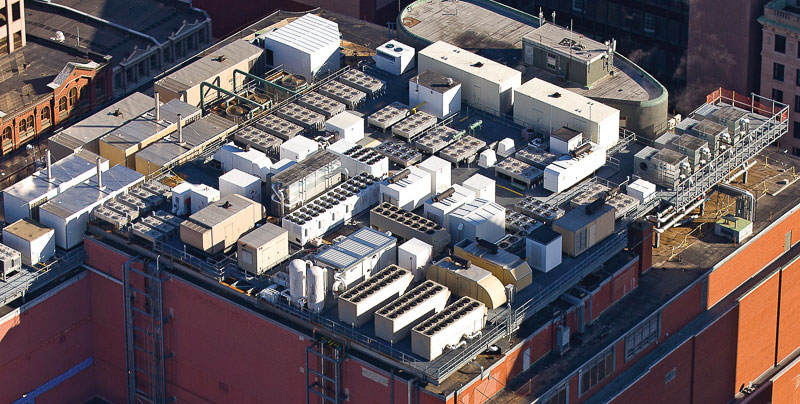
(Photograph courtesy of the Markley Group.)
Surely the most remarkable technological story of the new century is the emergence of the Internet as the preeminent communications medium. Although the roots of the Internet go back almost 50 years, the physical infrastructure was almost invisible until recently. They can’t hide it anymore. Internet switching nodes and data centers are huge installations. Even if most of the machinery is hidden in windowless rooms, the buildings are identified by their abundance of backup generators and cooling units.
The word fracking was a new addition to the American vocabulary when the first edition of Infrastructure appeared. In the past 10 years this technique for recovering “tight oil” has changed the complexion of the petroleum industry, and changed some large swaths of the North American landscape.
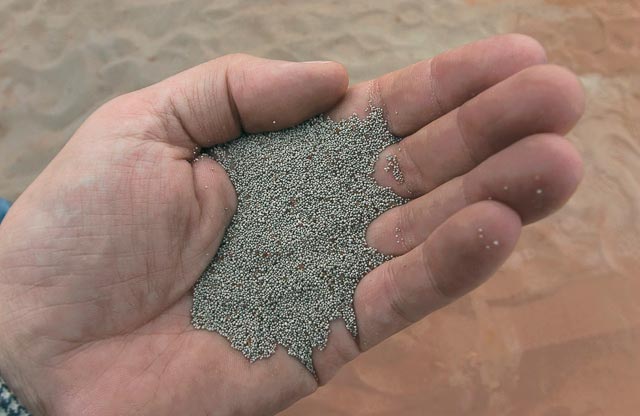
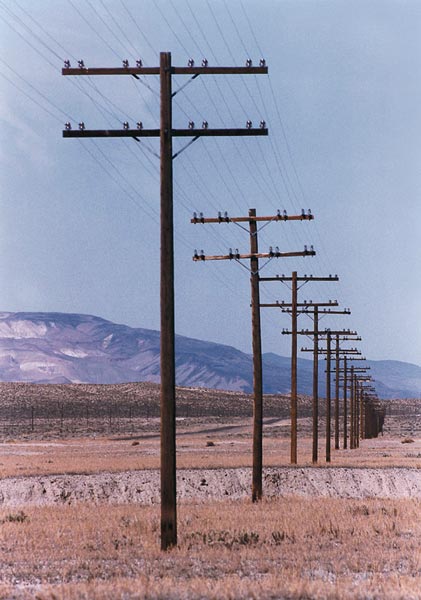
Updating the book involved not just searching out what’s new on the landscape but also noting what has disappeared. Long-distance phone calls were once carried on bare copper wires strung all across the country on wood poles with glass insulators. The ones shown above, in western Nevada, may have been among the last still in service.
About Brian Hayes

I’m a writer who has always been interested in science, mathematics, and technology. For more than 20 years I wrote and illustrated a column called “Computing Science” for American Scientist magazine; before that I was the editor of American Scientist and earlier still an editor on the staff of Scientific American. I also write a blog at bit-player.org, where you’ll find a list of my publications.
My fascination with the industrial landscape goes back to childhood. I began thinking about a book on the subject in the 1980s, and I began work in earnest in 1992, aided by a grant from the Alfred P. Sloan Foundation. The next 15 years featured a series of long road trips with a car full of camera gear, making frequent stops for power plants, bridges, antenna towers, farm machinery, and other technological bric-a-brac. The book is my attempt to bring you along on those adventures.
I am always pleased to hear from readers. You can reach me by email at: brian@bit-player.org
Is This Book for You?
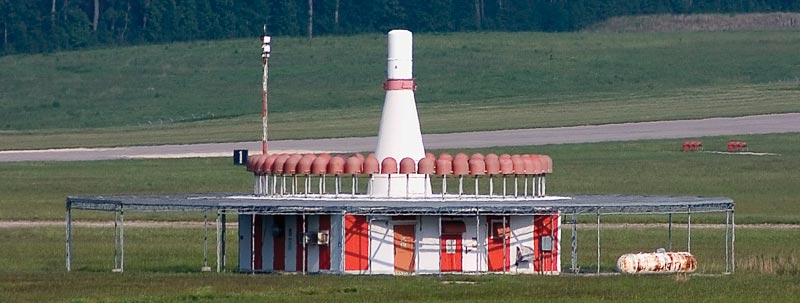
Have you ever looked out the window of a car or an airplane and wondered, “What is that thing, anyway?” Then yes, this is the book for you. No expertise required—just curiosity.
Facts and Figures
| Size: | 10 × 10 × 1 inches (25 × 25 × 2 cm) |
| Pages: | 568 |
| Photos: | More than 750 |
| Binding: | Paperback |
| Publisher: | W. W. Norton & Co. |
| Publication date: | 27 October 2014 |
| Price: | $60 US |
| ISBN: | 978-0-393-34983-2 |
Praise
From the reviews of the first edition
“One of the most magical books I’ve ever chanced upon . . . . Pick up Brian Hayes and the power lines and drains around you will soon reclaim their just share of beauty and significance.”
—Alain de Botton, The Observer
“When seen through the discriminating lens of author and photographer Brian Hayes, man-made objects appear as exquisite and natural as organic ones.”
—Elizabeth Svoboda, Wired
“In the original, highly readable Infrastructure. . . , Brian Hayes adapts the form of the field guide to ‘everything that isn’t nature’.”
—Anne Eisenberg, Scientific American
In 2006 Infrastructure was awarded the Sally Hacker Prize of the Society for the History of Technology.
Where to Buy It

Ask for it at your local bookstore.
Order it from Amazon.
Order it from Powell’s Books.
Find it at a library.
Colophon
Web site created by Brian Hayes, based on the reveal.js framework. Fonts are Open Sans and Crimson Text, both from Google Fonts.
Except as noted, all photographs are by Brian Hayes. For permission to reproduce photos, please write to brian@bit-player.org.
The first edition of Infrastructure, published in 2005, is now out of print. The web site for that edition has not been updated in several years, but you can read it here.